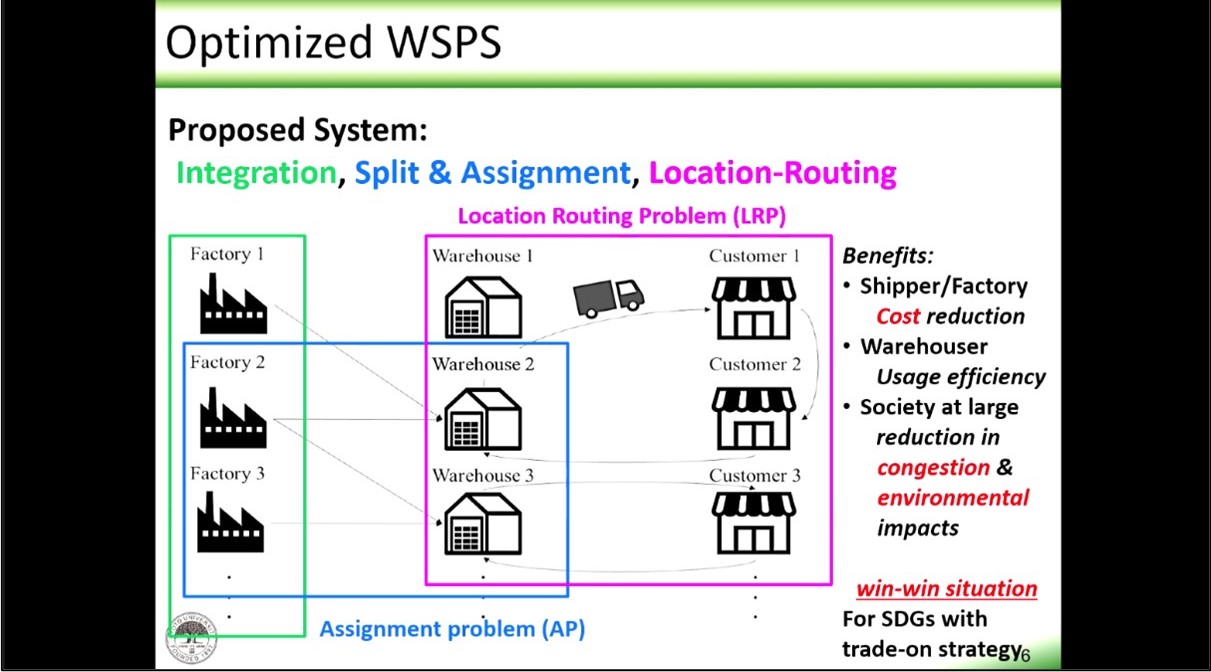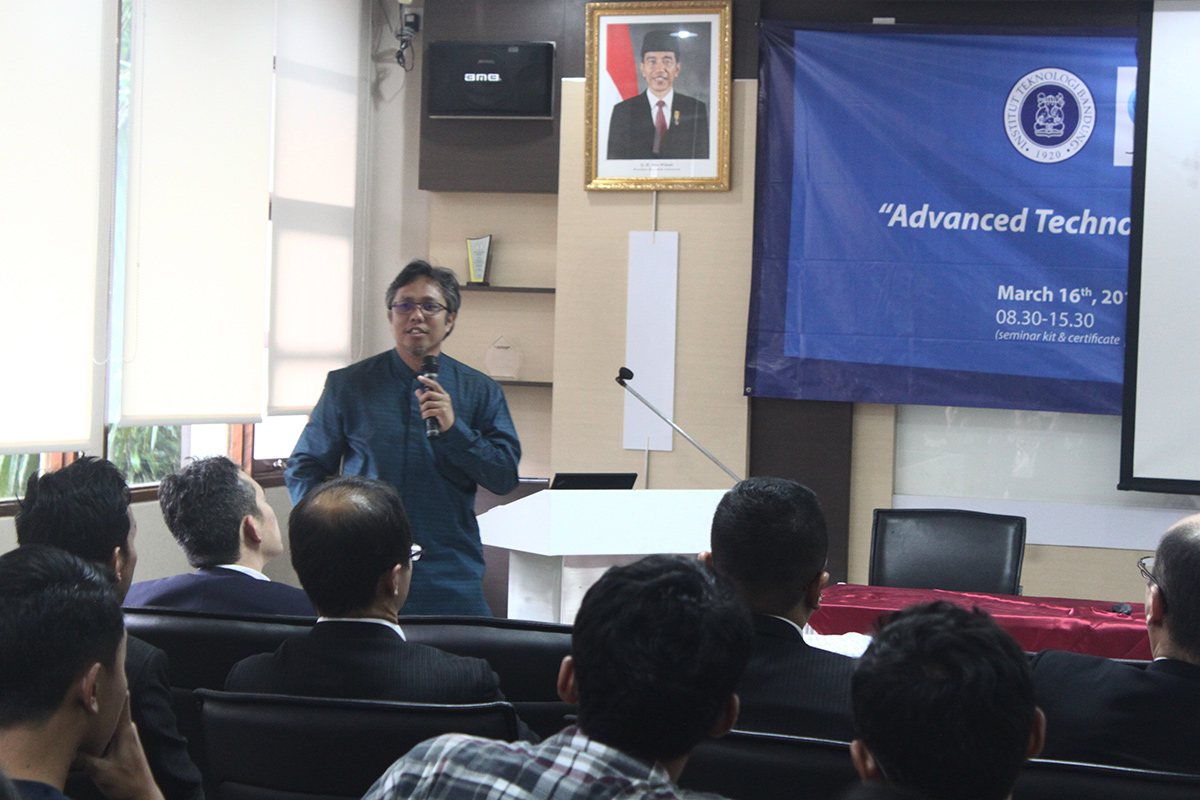The WSPS System, A Solution to Logistics and Transportation Issues
By Adi Permana
Editor Adi Permana

BANDUNG, itb.ac.id –Transportation systems and engineering is one of the many endeavors to actualize sustainable infrastructure while improving social conditions such as traffic congestion and pollution. A general solution to the logistics and transportation issue must encompass social, financial, and environmental aspects to create a sustainable city.
Tadashi Yamada, a Kyoto University professor, delivered that in a lecture at the Sustainable Infrastructure and Built Environment (SIBE) 2022, Tuesday (8/3/2022). The Japan-hailed professor conveyed his notion on “Optimizing Warehouse Sharing Platform Systems with Vehicle Routing.”
Aside from traffic congestion, Dr. Yamada addressed the interconnectivity between logistic issues and land use, where logistical facilities and housing areas are convoluted. This convolution causes a logistic sprawl, where there is a seasonal trend of warehousing and factory demands. Massive during the summers while scarce in the winters, the disproportionate demands create an imbalance.
The solution to logistic sprawl is supply chain collaboration, where co-implemented warehouses, consolidated deliveries, and comprehensive logistics efficiency laws were applied. Furthermore, business platforms could create a connective space between consumers and servicing inventories, such as Amazon, Rakuten, and AirBnB.
“With such a business strategy, it is possible to distribute and maximize the benefits of warehousing or factory systems. WSPS (Warehouse Sharing Platform System) does not merely link warehouses with owners and factories; it also reduces land-use concerns by preventing warehouse and factory overflow in certain regions,” stated Dr. Yamada.

To optimize WSPS, Dr. Yamada proposed an integrated collective system, distribution and allocation, and the creation of a warehouse demand location route. This strategy entails utilizing warehouses and factories in a designated area and determining the ideal location for WSPS applications. Factories and retailers can reduce expenses, promote facility use efficiency and decrease the frequency of jams, and diminish negative environmental impacts.
Dr. Yamada also suggested the three WSPS models: the shipper/factory model (S/F model), the warehouser model, and the matching model. Each possessed individual advantages. The S/F model can minimize the total office leasing cost by choosing the best factory and shipment route combination. On the other hand, the warehouser model will maximize factory operation by selecting the optimum factory and shippers, where the necessities of each shipper were derived from the S/F model. Lastly, the matching model incorporates the needs of each shipper with factory supplies through simulation models, including multiple scenarios relating to factory capacity and shipper tally.
“An effective modern strategy is implemented on WSPS to reduce economic and social costs. As a result, we were able to identify several pieces of information, which benefit businesses, SDGs, city planning, and new logistic initiatives.”
Reporter: Ruth Nathania (Environmental Engineering, 2019)
Translator: Firzana Aisya (School of Life Sciences and Technology, 2021)
Photo source: Freepik


.jpeg)
.jpg)
.jpg)
.jpg)

.jpg)

